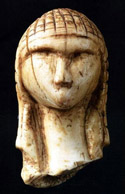Anthropology, Department of

Department of Anthropology: Faculty Publications
Document Type
Article
Date of this Version
2012
Citation
Archives of Sexual Behavior (letter) 41:745-747.
Abstract
Hebephilia is the sexual attraction to early pubertal children in Tanner Stages 2 and 3, generally ages 11 through 14.
The second author of this letter (R.B.), a member of the Paraphilias Subworkgroup of the Work Group on Sexual and Gender Identity Disorders for DSM-5, proposed a diagnostic entity for DSM-5 that resembles the ICD-10 model, but with a different name: Pedohebephilic Disorder. In the original proposal (Blanchard, 2010a), this disorder would have three subtypes: pedophilic, hebephilic, and pedohebephilic. In the current version of the proposal, which is still under consideration, the name has been changed to Pedophilic Disorder, in order to harmonize the label as well as the content with its ICD-10 counterpart, and the subtypes have been changed to classic, hebephilic, and pedohebephilic. Franklin (2009) objected to the proposal to roll hebephilia into the diagnosis of Pedophilic Disorder in DSM-5 on the grounds that “such attractions are evolutionarily adaptive” (p. 319).
We believe the data we present here clearly demonstrate that not only is hebephilia not an adaptation but more reasonably a maladaptation in both ancient and modern environments.


Comments
Copyright © 2012 Springer Science+Business Media, LLC. Used by permission.